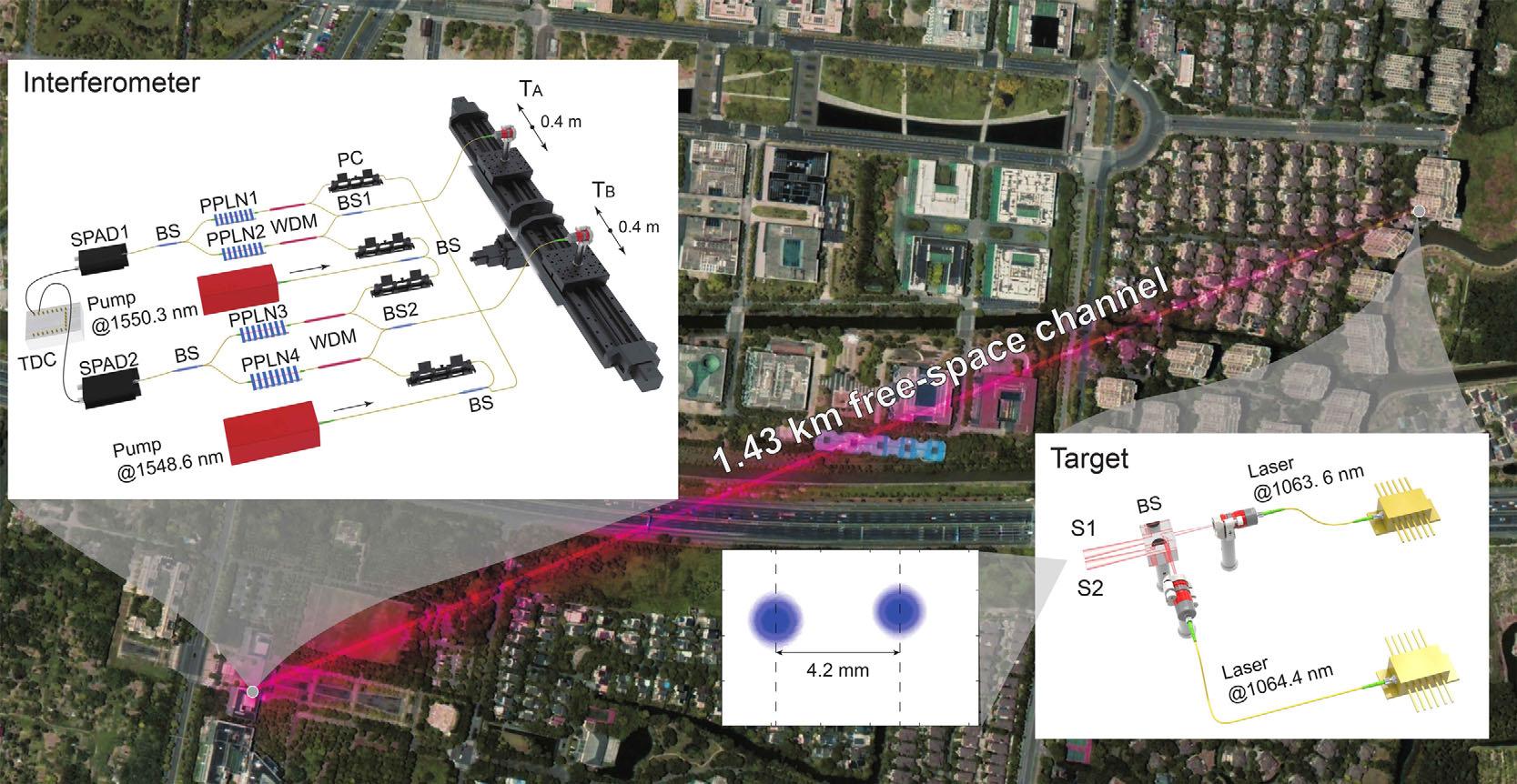High-spatial-resolution Interferometry Enters Multi-Wavelength Era
Interferometers are widely used in various high spatial resolution imaging techniques to extend the diffraction limit. However, the conventional interferometric methods only work when the photons have the same wavelength.
In a study published in Physical Review Letters, a research group led by Prof. PAN Jianwei and Prof. ZHANG Qiang from the University of Science and Technology of China (USTC) of the Chinese Academy of Sciences, collaborating with Prof. Frank Wilczek from the Massachusetts Institute of Technology (MIT), built a chromatic intensity interferometer by a periodically poled lithium niobate waveguide (PPLN), and measured two very close laser sources of different wavelengths.
In 2016, Frank Wilczek, a Nobel Prize winner, and his colleagues theoretically proposed that photons of different wavelengths could enter the detector to interfere and extract the phase information through introducing a color erasure detector, which was based on the frequency conversion into an intensity interferometer. This new technique was then named chromatic intensity interferometry.
Subsequently, Prof. PAN’s group from USTC built single-photon detectors with the PPLN waveguide created by Jinan Institute of Quantum Technology. Utilizing these color-erasure detectors, they demonstrated the intensity interference technique in the laboratory. The studies were published in Phys. Rev. Lett. and Opt. Express, respectively.

Scheme of the chromatic intensity interferometer. (Image by LIU Luchuan et al.)
To verify the high spatial resolution imaging of the chromatic intensity interferometry, researchers in this study carried out a series of field experiments. By using two pump lasers of different wavelengths (1063.6 nm and 1064.4 nm respectively) to pump a pair of parallel PPLN waveguides, they realized color erasure detectors which could not distinguish between photons of 1063.6 nm and 1064.4 nm.
With the two detectors, they installed two telescopes to build an intensity interferometer with a baseline length of 80 cm. After measuring the distance between two laser sources separated by 4.2 mm at a distance of 1.43 km by the telescopes, they proposed a phase fitting method to obtain the angular distance between the two laser sources. Surprisingly, the results surpassed the diffraction limit of a single telescope by about 40 times, proving that the chromatic intensity interferometry had a higher spatial resolution.
With the multi-wavelength setting, this technique expands the application of intensity interferometry to diverse fields such as astronomical observation, space remote sensing, and space debris detection.
Paper link: https://link.aps.org/doi/10.1103/PhysRevLett.127.103601
(Written by Zhao Xiaona, edited by HOU Luyao, USTC News Center)
Back
